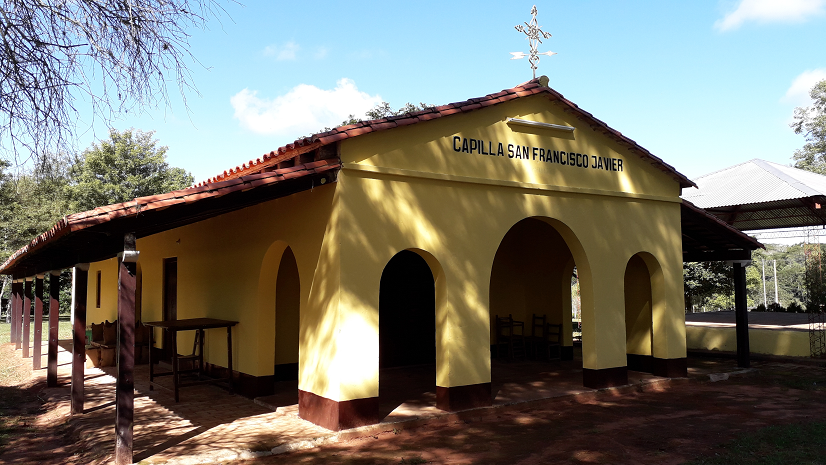In Paraguay religion plays an important part in everyday life. Particularly the Catholic church. Every town has its principal church. These are often fine old buildings which serve as a focus for the town.
Beyond these is a large network of neighbourhood chapels. No district no matter how small or remote is without its chapel.
These chapels however remote from the towns are all daughters of the main town churches.
It is towards the mother churches that the chapels all look. In the same way as those churches in turn look towards the basilica in Caacpue.
Every chapel has its own patron saint and is attended and cared for by the local community. For me the two closest chapels are. In one direction, San Francisco in Naranjo and San Roque in Ita Moroti. Both in Piribebuy and both answering to the principal church there.
For scattered rural communities a distance from town access to a local chapel is important. It allows the people to be part of the wider Catholic community within their neighbourhood. Everyone is within walking distance of a place of worship.
The chapels give people access to the rites of the church where they live and not just in a distant town. All though is on a smaller more intimate scale than in town.
All the major rites of passage such as baptisms, marriages and funerals are preformed in chapels. Those with greater resources may wish to use the town church but the system of chapels ensures that no one, whatever their circumstances is excluded from such things.
To allow for the priests time and expenses some things that would normally be done individually are dealt with in groups.
For instance the priest may travel out from town to marry more than one couple in a chapel. Saving everyones time and money and increasing the congregation. Many of those in attendance will know all the couples and have a choice of receptions to go to afterwards.
Baptisms are also dealt with in bulk. Rather than having a unique service for each child many may be baptized together. The practice in the San Roque chapel at least is for the priest to come just once a year to baptize all the children born over the last twelve months.
This makes the baptisms into one of the largest events of the year for the chapel. Almost everyone in the local area will be a friend or a relative of some one having a child baptized.
For other local festivals each chapel also celebrates the day of its saint. For a week beforehand masses will be held and then on the day itself a festival of celebration running well into the night.
In the weeks before the festival all the annual repairs and maintenance will be done at the chapel. Come the time of the celebrations it will be looking brand new. All from the hands of its neighbours.
The chapels are also linked through Catholic doctrine directly with their mother churches. The children all receive their catechism classes at their local chapels.
They then travel into the towns for their first communion or conformations. Those days are big days for the towns and the town church as people arrive from all the surrounding districts. All to go though the rite together.
The town church also has its saint and its festival time. At this time the daughter chapels are never forgotten. The various masses held in the days leading up to the festival day are dedicated to different chapels.
Whilst some may go to as many masses as they are able to bulk of the local population attends the mass on the day it is dedicated to their chapel. They travel to and from town in a long stream of buses, cars and motorbikes. This is an annual event no one wishes to miss.
For the great part of the year the chapels are well cared for if quiet. They are however something no community in Paraguay could live without.


Recent Comments